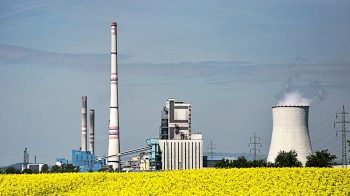The drip irrigation market size is estimated to be valued at USD 5.2 billion in 2022 and is projected to reach USD 8.3 billion by 2027, recording a CAGR of 9.8% during the forecast period in terms of value. Drip irrigation is increasing in popularity among growers, as it helps in transferring water to the roots of the plant where it is needed, at the correct volume, and without a lot of waste due to wind, runoff, overspray, and evaporation. Drip systems use between 20%-50% less water than traditional sprinkler systems. In addition to distributing water, drip irrigation systems can also distribute fertilizer, allowing the nutrients to be delivered to plants with minimal labor expense and workforce chemical exposure.
Download PDF brochure: https://www.marketsandmarkets.com/pdfdownloadNew.asp?id=217216582
Vegetable crops grown using drip irrigation require regular water distribution to avoid plant stress during critical growth periods, which could affect both crop productivity and crop production quality. The use of drip irrigation helps maintain a uniform moisture level near the active root zone of the vegetable plant. Moreover, vegetable crops such as potatoes, cabbages, and onions form a key aspect of the Asia Pacific demand as well as exports; however, the increasing government and political scrutiny to reduce water withdrawal rates and advancements in drip lines have led to growers adopting drip irrigation systems in the region. An increase in the area under precision agriculture is also one of the major factors, which has contributed to the increased market demand for drip irrigation systems.
Low costs of installation and maintenance leads to an increasing demand for surface drip irrigation systems. Surface equipment utilizes water, which is applied over the soil by drip tubes or laterals. It is usually recommended for flat land slopes and medium-to-fine textured soil types, which promote the lateral spread of water through furrow or across the basin. The surface equipment provides numerous advantages at the farm level and project level. They are not affected by the sloping pattern and undulating land. It is easier to detect the clogging of emitters in the surface equipment. Hence, increasing the demand for surface segment drip irrigation.
Inline emitters are attached to the lateral’s inner wall and are usually cylindrical or flat boat shaped. Moreover, inline emitters are present within the lateral with equal spacing. Inline emitters helps in providing maximum resistance against clogging, and are also suitable for subsurface and surface irrigation. Moreover, improved efficiency and fertigation compatibility drive demand for inline emitters.
Make an Inquiry: https://www.marketsandmarkets.com/Enquiry_Before_BuyingNew.asp?id=217216582
Nowadays, agricultural focus is shifted to more commercial crops from traditional crops. Due to these modifications, facilities of irrigation are modernizing the irrigation management and most preferably, the infrastructure. The growth in this region is driven by the rise in demand for agricultural produce due to the growing population, an increase in technological advancement in irrigation facilities, and government subsidies in various countries of this region.
This report includes a study on the marketing and development strategies, along with the product portfolios of leading companies. It consists of profiles of leading companies, such as Jain Irrigation Systems Ltd. (India), Lindsay Corporation (US), The Toro Company (US), Rivulis (Israel), Hunter Industries Inc. (US), Netafim (Israel), Rain Bird Corporation (US), Chinadrip Irrigation Equipment Co., Ltd. (China), Elgo Irrigation Ltd. (Israel), and Shanghai huawei water saving irrigation corp. ltd. (China).
